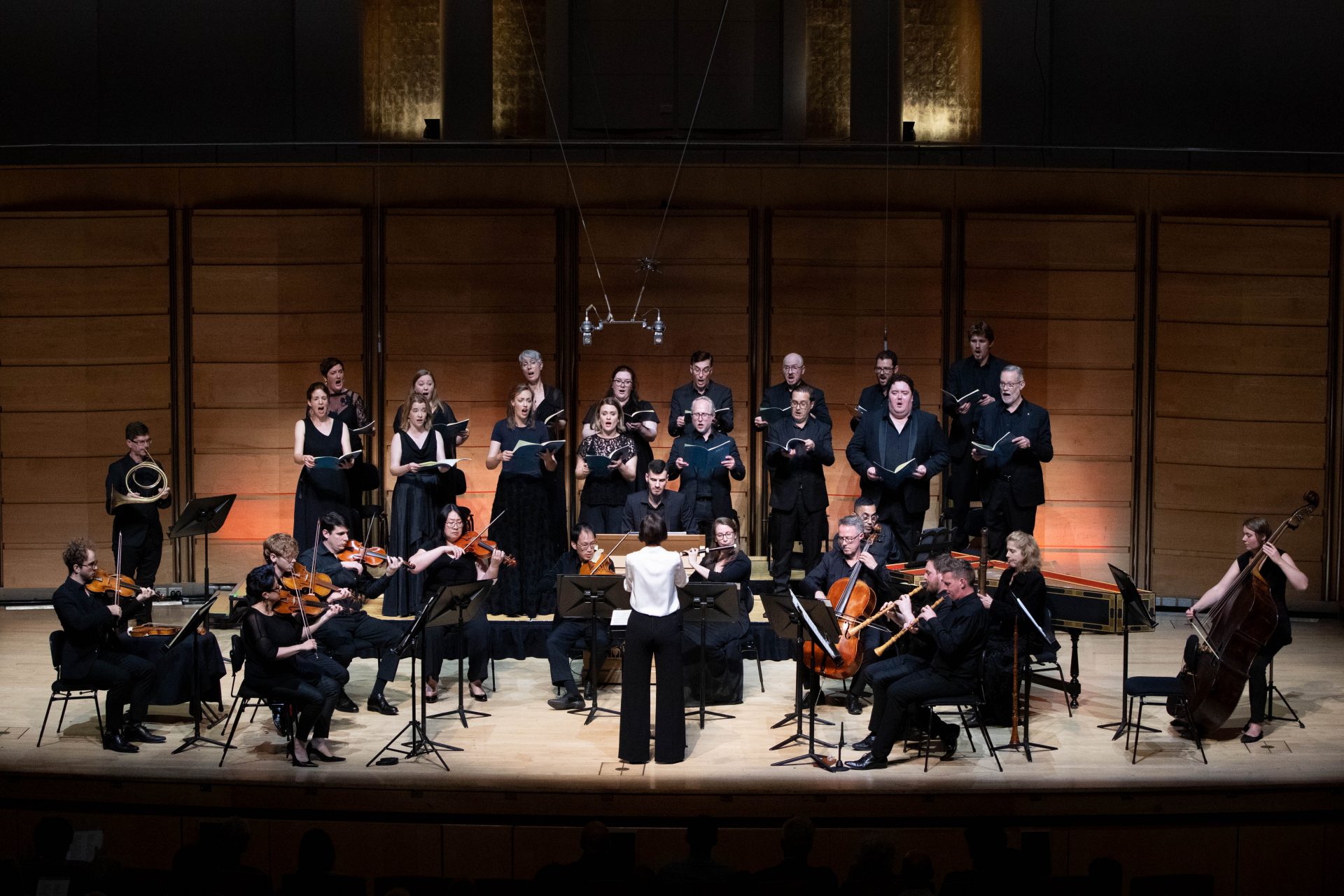The In dulci jubilo was a fitting way to begin. It is a voluntary often used to accompany congregational singing, and is in the fine tradition of neat organ pieces that presage the devotional music that is to follow. It features creative harmonisations of the underlying chorale and meandering Buxtehude-style flights of fancy that remind one of the following remonstrance against Bach’s novel approach to liturgical music as a young and inventive organist:
“We reprove [Bach] for having hitherto made many curious variationes in the chorale, and mingled many strange tones in it, and for the fact that the Congregation has been confused by it. In the future, if he wished to introduce a tonus peregrinus, he was to hold it out, and not turn too quickly too something else or, as had hitherto been his habit, even play a tonus contrarius.”
Nathan Cox performed this deftly and with sharp articulation on the positive organ.
This set the scene for the first cantata, Under mund sei voll Lachens (BWV 110). Bach connoisseurs would immediately recognise the opening sinfonia as the overture to Bach’s fourth orchestral suite. It is in the style of a French overture – marked as it is by dotted rhythms and by an A-B structure. The punctuation of the voice in the joyful B-section was incredibly punchy and had the greatest effect of any rendition of this cantata that I have ever heard. Madeleine Easton chose a sprightly pace, which really brought out the dance-like quality that Bach doubtless intended to convey. Given it is a reworking of an earlier piece, the musical scansion is quite awkward at times, as with his Lutheran Masses. It is quite a feat for Andrew O’Connor as bass to pull off such a meandering phrase accompanying “Großes an uns getan”.
The aria, Ihr Gedanken und ihr Sinnen, is, by contrast, haunting. Reflecting the wording (Gedanken und Sinnen) it is contemplative and the tenor, Timothy Reynolds, muses in anguish amidst a delightful baroque flute duet featuring Mikaela Oberg and Jessica Lee. Speaking of musings, the next aria, Ach Herr! was ist ein Meschenking for alto, is a curious piece in itself. The melodic line is awkward and meandering – as though it is searching for resolution. This seems deliberate. It is meant to convey the search of an anguished soul for purpose and meaning. Oboist Adam Masters really stood out here. It was in the Here sei Gott in der Hohe where Danny Yeadon stood out on cello from the very first few notes, which jumped to life expressively and as though in earnest. Coordinating the voices in this duet from the outset is quite tricky, but Susannah Lawergren and Timothy Reynolds pulled it off well. Lawergren has a distinctly crystalline quality to her voice, which suited this aria. O’Connor’s distinctly clear and booming voice was on full display in the declamatory Wacht aud, ihr Adern und ihr Glieder. And all this rounded off by a rousing and well-formed chorale with all the key rhetorical tactics – jarring chords, repetition of melodic lines to build up the urgency of the call to faith, and punchy fermati.
The voices were laid bare in the motet, Singet dem Herrn (BWV 225). This too gave the opportunity for Easton to weave her magic and imbue her infectious energy and bring out the dance element of Bach’s devotional music.
Jesu, der du meine Seele (BWV 78) is a masterclass in composition. It traverses the whole gamut of human emotion in the space of a few movements. The opening chorale itself features tight counterpoints grounded upon a descending chromatic bass – which is Baroque for ‘lament’. Its ending feels devastating. But then comes the duet aria, Wir eilen mit schwachen, doch emsigen Schritten, which is sheer joy. Anna Sandstrom has an admirably clear voice, redolent in timbre of Dorothee Mields’, and Stephanie Dillon did well in accentuating the earnestness captured by the wording. It is altogether remarkable how vividly Bach captures in music the image of “schwachen doch emsigen schritten”.
We then end on the timeless Wachet auf (BWV 140). This too is a very neat composition. The sopranos introduce the cantus firmus and persist delicately throughout. A highlight was the recitative, which recalls the vox Christi in Bach’s Passions. It is impassioned, declamatory, and varies markedly in tone within the space of a few bars. Daniel Walker performed an exemplar recitative which was full of vitality, and one could picture him leaning over the edge of the pulpit. But the most poignant moment was the duet between Lawergren and O’Connor. It is a dialogue between man and God – between suffering and hope – and the piecemeal question/response structure is evidently a rhetorical strategy of which Bach was fond – think back to the duet between the allegorical characters in his Erfreut euch, ihr Herzen (BWV 66).
